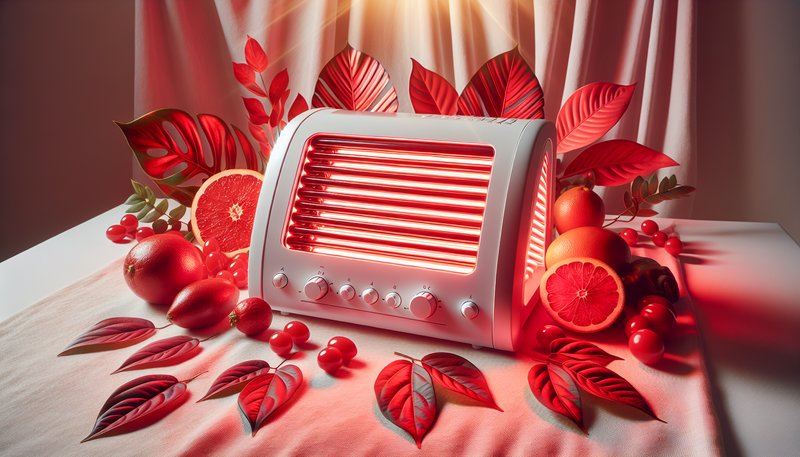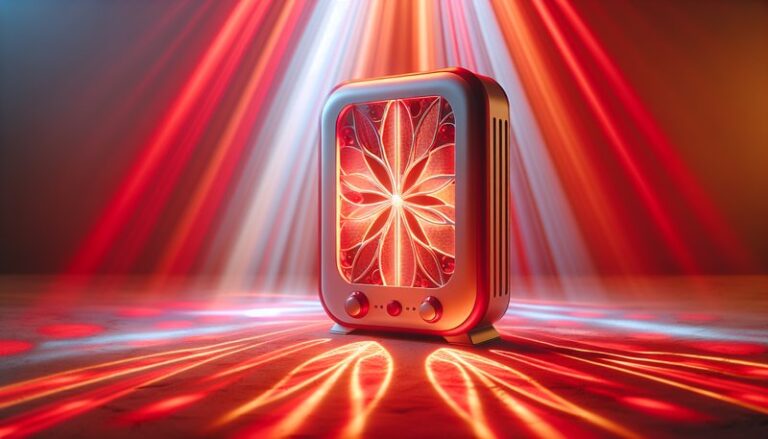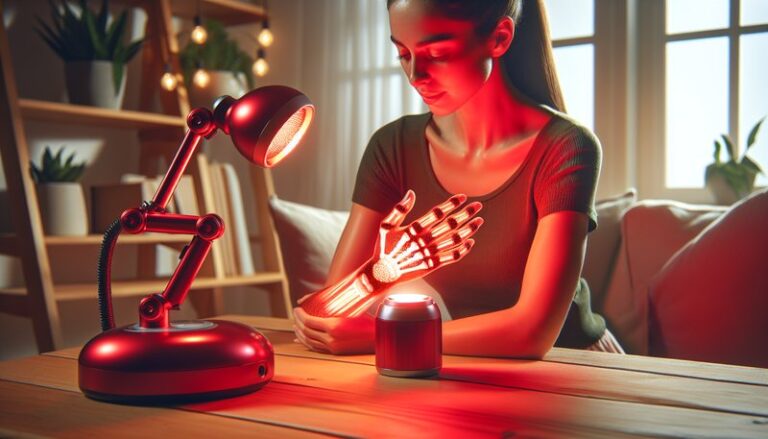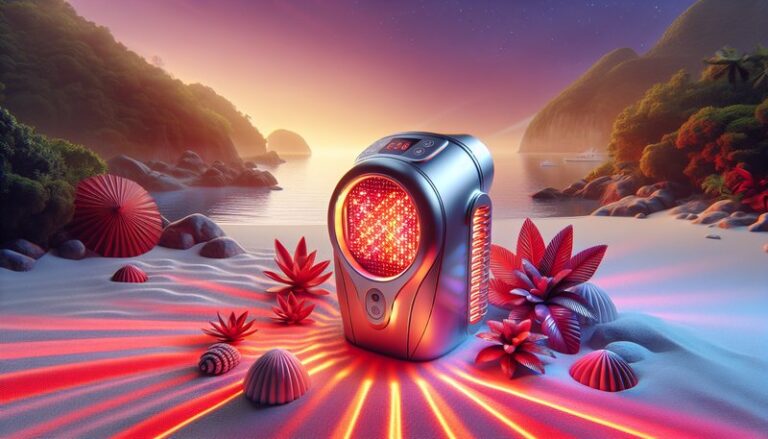Why Is Red Light Therapy Good?
Have you ever wondered how a simple light can significantly enhance your health and well-being? Red light therapy, an advancing wellness trend, is gaining popularity for its impressive benefits.
This article will delve into the advantages of red light therapy, exploring its applications, benefits, considerations, alternatives, and more. By the end, you will have a comprehensive understanding of why red light therapy could be a valuable addition to your health regimen.
Key Takeaways
- Red light therapy promotes cellular repair and rejuvenation.
- It may enhance recovery from injuries and reduce inflammation.
- The therapy has minimal side effects and numerous applications.
What is Red Light Therapy?
Red light therapy (RLT) is a non-invasive treatment that utilizes low-wavelength red light to penetrate the skin and stimulate various cellular processes. This therapy is rooted in photobiomodulation, wherein light photons trigger biological reactions in cells. RLT is commonly applied using LED devices and is often used in fitness, dermatology, and wellness treatments.
For the full story, read Duration of Red Light Therapy?
The light from RLT is typically in the wavelength range of 600 to 1000 nanometers. When absorbed by the skin, this light can enhance mitochondrial activity—the powerhouse of the cell. This results in increased ATP production, which supports cellular health and vitality.
What are the Benefits of Red Light Therapy?
Red light therapy offers a myriad of benefits that can improve overall health and wellness. In the following sections, we’ll explore key advantages in detail.
Promotes Skin Health
Red light therapy enhances skin health by encouraging collagen production, reducing wrinkles, and improving skin tone. Studies suggest that RLT accelerates the healing of acne scars and other skin blemishes. For instance, a research study indicated significant improvements in skin texture and elasticity after consistent RLT sessions.
Reduces Inflammation and Pain
One of the most notable benefits of red light therapy is its anti-inflammatory properties. RLT has been shown to reduce inflammation in various conditions, including arthritis and muscle injuries. Many athletes use RLT post-exercise to accelerate recovery and alleviate soreness. Evidence suggests that it can significantly decrease pain levels and promote faster healing.
Enhances Muscle Recovery and Performance
Athletes and fitness enthusiasts are increasingly turning to red light therapy to improve recovery times and boost performance. RLT has been shown to improve muscle strength and endurance, making it an excellent tool for sports conditioning. For example, a study found that athletes using RLT saw a noticeable improvement in muscle recovery after intense workouts.
Improves Mood and Sleep Quality
Research also highlights red light therapy’s potential benefits for mental health. Regular RLT sessions may help regulate sleep patterns and improve mood by influencing melatonin production. Users often report enhanced relaxation and a reduction in anxiety levels after treatment.
Is it Possible to Use Red Light Therapy at Home?
Using red light therapy at home is entirely feasible. With the rise of accessible RLT devices, many individuals can safely integrate this therapy into their daily routines without the need for professional assistance.
What are the Advantages of Home Use?
Convenience
Home RLT devices provide the flexibility to use therapy whenever it fits into your schedule, saving time and money on professional treatments.
Cost-Effective
Investing in a home device can lead to substantial savings over time, as you avoid recurring treatment costs at clinics or spas.
See the comprehensive guide Does Red Light Therapy Cause Spots?
Customization
Using RLT at home allows you to adjust the frequency and duration of sessions according to your personal health and goals.
What are the Disadvantages of Home Use?
Equipment Quality
Not all home devices are created equal. The effectiveness of treatments can vary greatly depending on the quality and wavelength of the device.
Lack of Professional Guidance
Although self-treatment is convenient, individuals may miss out on valuable insights and personalized plans that a professional could provide.
Safety and Usage Knowledge
Users must educate themselves about proper usage and safety practices to avoid potential mishaps.
What are the Things to Consider Before Using Red Light Therapy?
Before incorporating red light therapy into your health regimen, it’s essential to consider several factors to ensure safe and effective use.
Consultation with a Healthcare Provider
Always consult with a healthcare professional before starting new therapy, especially if you have underlying health conditions or concerns about skin sensitivity.
Device Specifications
Research different RLT devices thoroughly. Ensure that the device releases light within the optimal wavelength range of 600 to 1000 nanometers for effective therapy.
Session Frequency and Duration
Determining the right frequency and duration for your sessions is crucial. Following manufacturer guidelines and adjusting based on your body’s response can lead to the best results.
What are the Alternatives to Red Light Therapy?
If you’re exploring health and wellness therapies, several alternatives to red light therapy may also be effective.
Infrared Saunas
Infrared saunas utilize heat and light to promote relaxation and detoxification. They can improve circulation and enhance skin health, similar to red light therapy.
Cryotherapy
Cryotherapy involves exposing the body to cold temperatures to reduce inflammation and accelerate recovery. Like RLT, it is often used by athletes for recovery purposes.
Ultrasound Therapy
Ultrasound therapy employs sound waves to promote healing and reduce pain. It’s widely used in physical therapy to accelerate recovery from injuries, much like red light therapy.
Conclusion: Is it Recommended to Use Red Light Therapy?
Red light therapy presents numerous potential benefits, from enhanced skin health to faster recovery times and improved mood. While home use is convenient, it is crucial to consider factors like device quality and professional guidance. Overall, red light therapy can be an excellent addition to one’s health regimen, offering numerous advantages for both physical and mental well-being.
Frequently Asked Questions
How often should I use red light therapy?
Most experts recommend using red light therapy two to three times a week for optimal results, with sessions lasting between 10 to 20 minutes depending on the device.
Is red light therapy safe?
Yes, red light therapy is generally considered safe for most individuals. However, it’s advisable to consult a healthcare professional, particularly for those with specific medical conditions or sensitivities.
Can red light therapy help with weight loss?
Some studies suggest that red light therapy may support weight loss efforts by enhancing metabolism and reducing inflammation, though it should be paired with a healthy diet and exercise for best results.
Are there any side effects associated with red light therapy?
Side effects are minimal but can include mild irritation or redness of the skin in rare cases. These effects typically resolve quickly after treatment.
How long does it take to see results from red light therapy?
Results can vary, but many users report noticeable improvements within a few weeks of consistent use. Long-term benefits may take several months to become evident.






